37+ Sample Board Meeting Agenda
-
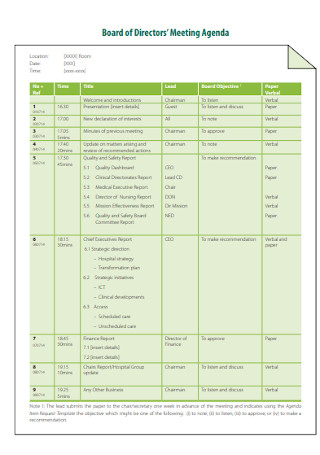
Board of Directors Meeting Agenda
download now -
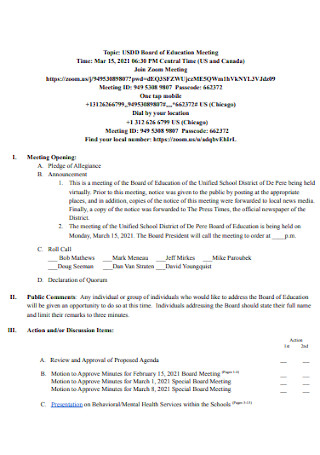
Board of Education Meeting Agenda
download now -
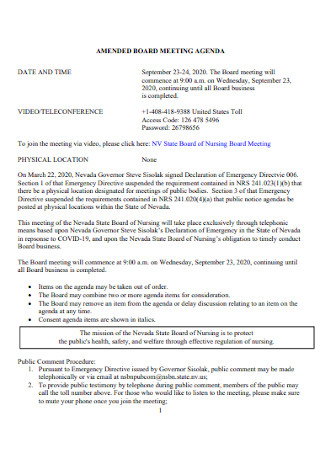
Amended Board Meeting Agenda
download now -
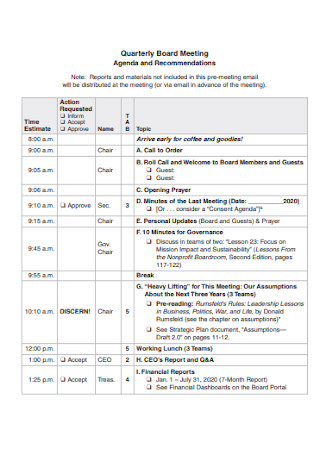
Quarterly Board Meeting Agenda
download now -
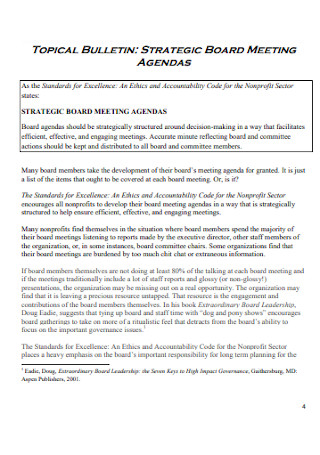
Strategic Board Meeting Agenda
download now -
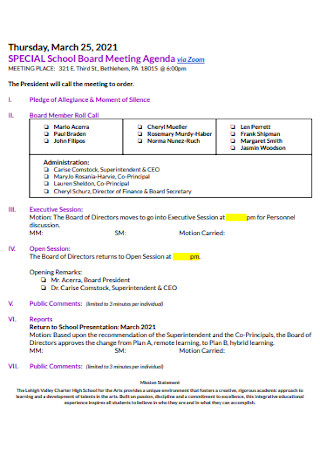
School Board Meeting Agenda
download now -

Regular Board Meeting Agenda
download now -

Board Meeting Procedure Agenda
download now -
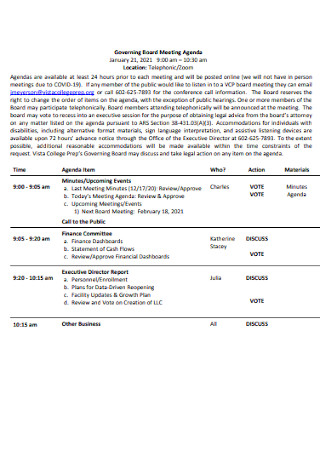
Governing Board Meeting Agenda
download now -
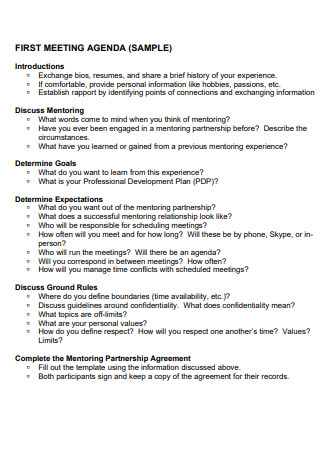
Board First Meeting Agenda
download now -
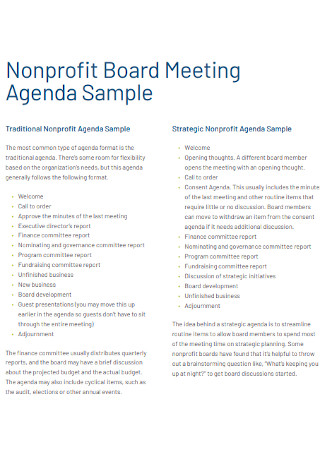
Nonprofit Board Meeting Agenda
download now -
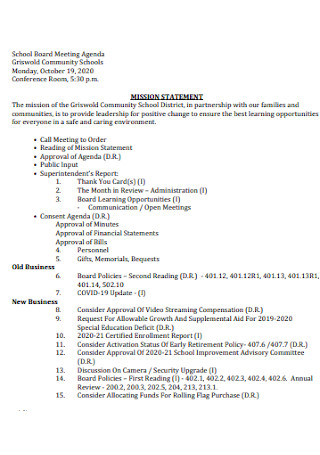
Sample School Board Meeting Agenda
download now -
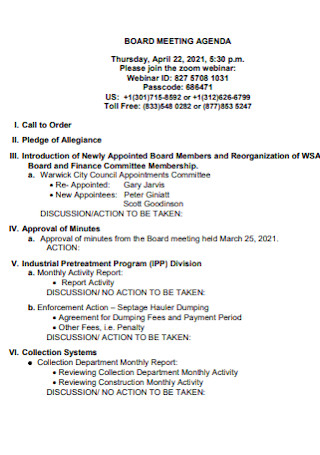
Formal Board Meeting Agenda
download now -
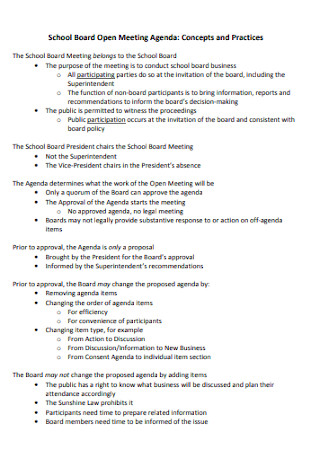
School Board Open Meeting Agenda
download now -
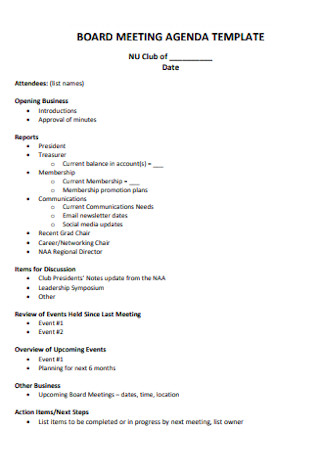
Board Meeting Agenda Template
download now -

Board Executive Committee Meeting Agenda
download now -
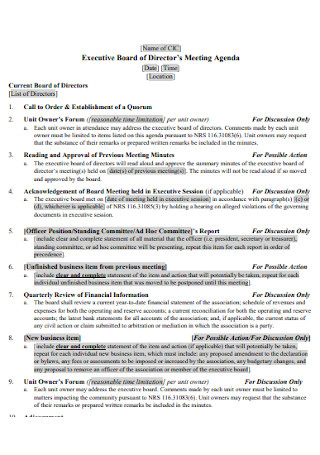
Executive Board of Directors Meeting Agenda
download now -
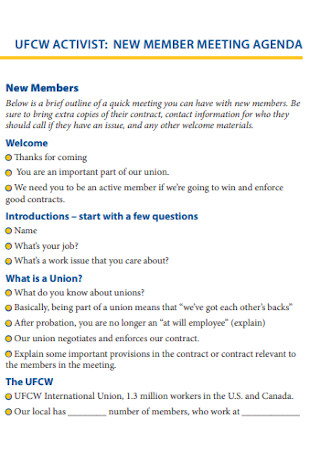
Board Members Meeting Agenda
download now -
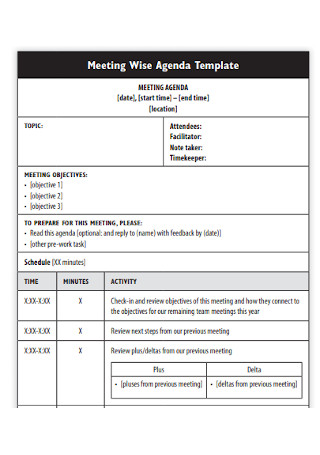
Board Meeting Wise Agenda
download now -
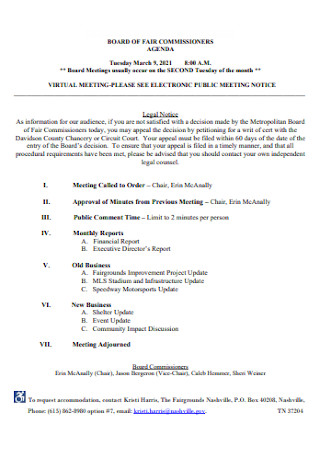
Board of Meeting Fair Commissioners Agenda
download now -
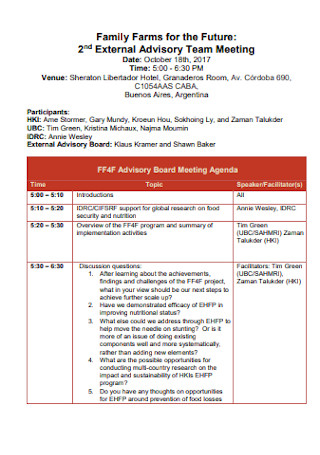
Board Team Meeting Agenda
download now -
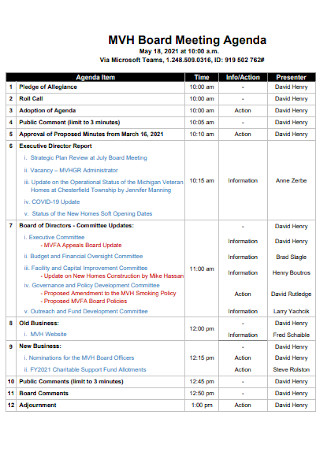
Board Meeting Agenda Format
download now -
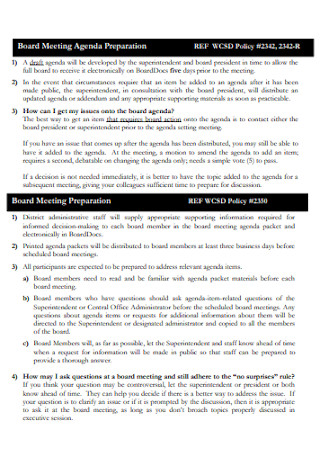
Board Meeting Preparation Agenda
download now -
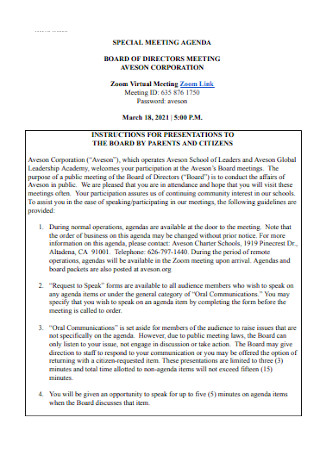
Board Special Meeting Agenda
download now -
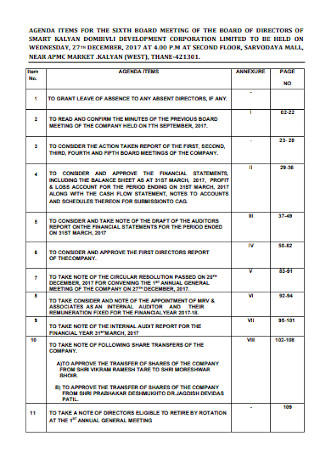
Corporation Board Meeting Agenda
download now -
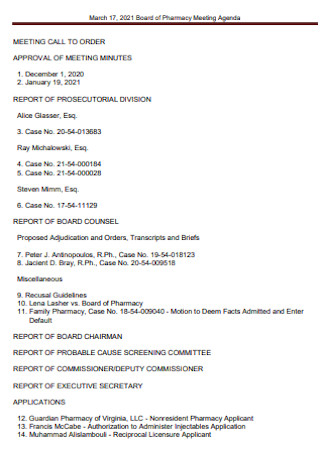
Board of Pharmacy Meeting Agenda
download now -
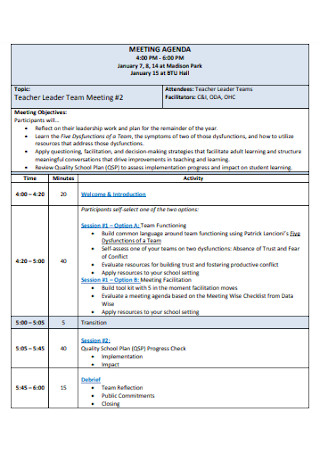
Board Teachers Meeting Agenda
download now -
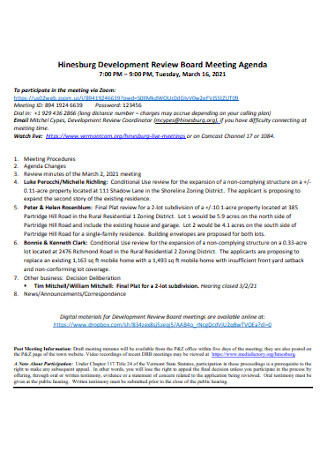
Simple Board Meeting Agenda
download now -
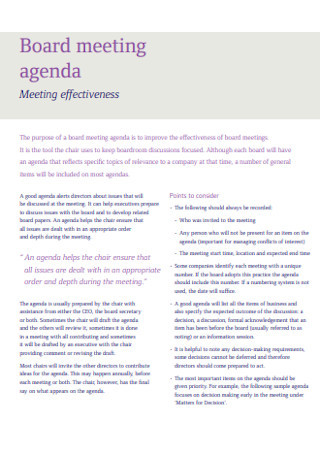
Basic Board Meeting Agenda
download now -
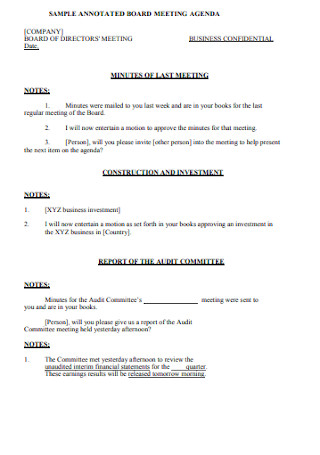
Annotated Board Meting Agenda
download now -
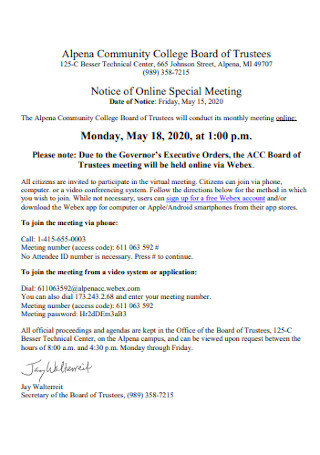
College Board Meeting Agenda
download now -
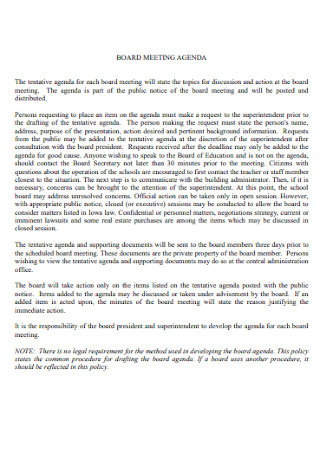
Standard Board Meeting Agenda
download now -
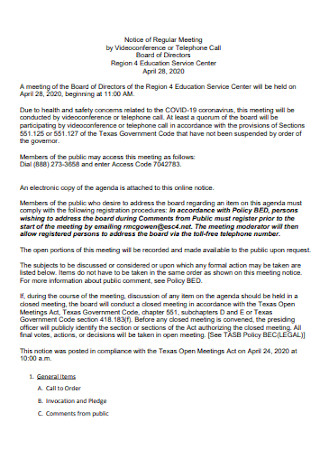
Notice of Regular Board Meeting Agenda
download now -

Board Annual Meeting Agenda
download now -
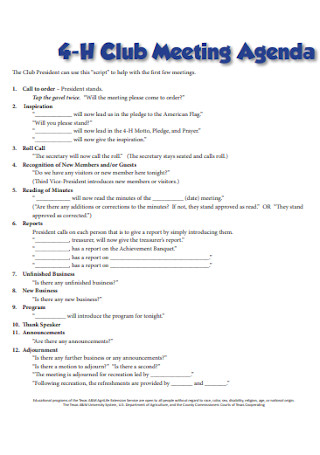
Board Club Meeting Agenda
download now -
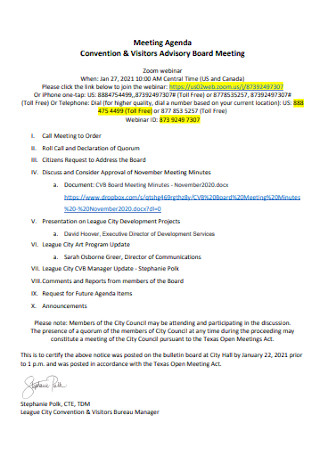
Visitors Advisory Board Meeting Agenda
download now -
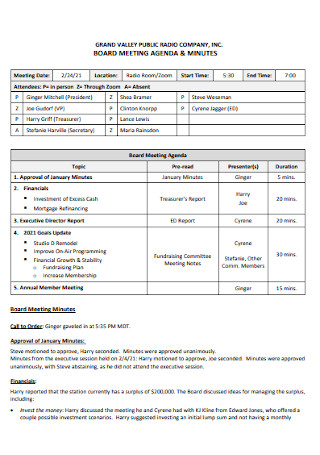
Company Board Meeting Agenda
download now -
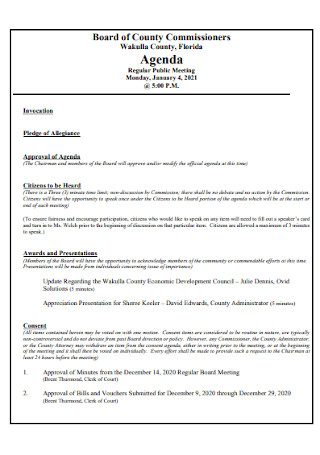
Board Public Meeting Agenda
download now
FREE Board Meeting Agenda s to Download
37+ Sample Board Meeting Agenda
What is a Board Meeting Agenda?
Importance of a Board Meeting Agenda
Outline of a Board Meeting Agenda
How to Make a Productive Board Meeting Agenda
FAQs
What Should Be on a Board Meeting Agenda?
Who Writes the Board Agenda for a Meeting?
How do I Write an Agenda for a Meeting?
Fortunately, that should not continue to be the case especially for board meetings that need urgent actions to be taken. If you build up an effective Board Meeting Agenda with our templates, you are assured that meetings will flow smoothly and objectives are observed.
What is a Board Meeting Agenda?
Unlike general meetings, board meetings are composed of the company’s board of directors or high executives that discuss and assess the overall business performance of the company, how to sustain its operations with efficiency or if there must be revisions in the budget plans or cuts to be made. With this definition in mind, it should then be absolutely necessary that board meetings stay on topic and be finished with the necessary resolutions enacted and one way to do so is crafting an effective board meeting agenda.
Board meetings are conducted by business organizations because there is a need to get things done and at its core is an effective meeting agenda which lists items needed to be discussed to control the flow of the meeting and ultimately achieve the expected outcomes through reaching a mutual conclusion. It’s basically an overview of how the meeting will go that is sent to the participants beforehand and this in turn, allows them to review the agenda items so they are able to provide any updates in relation to it as well as supporting details to further the discussion.
Importance of a Board Meeting Agenda
Besides aiding in the smooth flow of the meeting and increasing the board’s productivity, here are some more points as to why keeping a board meeting agenda is a must.
1. It serves as the meeting’s compass.
With a comprehensive list of the topics that need to be discussed, the chairperson or a person of high authority qualified to run the meeting can move from one item to another and with ease. Because they have better control of the direction the meeting can go, all the items including those from the previous meeting can be addressed in the quickest way possible or at least for an ample amount of time that they manage to not dwell on the item for far too long.
2. It allows board members to plan ahead.
Included in the meeting agenda, which will be further discussed later, are meeting items and the person responsible for discussing them. When committee heads are made aware of what is to be expected in the meeting that is in relation to their committees, they can better report on their progress, their committee’s project status and provide documents to support their claims. Additionally, this gives them the opportunity to expound more on the item, showcase significant progress that their committee has done, challenges their committee has faced and are facing as well as concerns they want to bring to the table that is worth discussing especially if it has a tendency to grow into something that can negatively impact the company as a whole. This way, the highest members of the board can evaluate the committee heads’ performances and they feel more secure to entrust leadership responsibilities on them.
For the board members, this gives them the opportunity to familiarize themselves with the discussion topics and be able to come up with their own points they would like to bring to the table and if they are more informed they could also contribute to the company’s action plan and suggest ways to resolve company concerns.
3. It puts certain things in perspective.
Somewhere along the way, it might be difficult to be on track of business transactions and operations that you get lost in its likelihood to be overwhelming. This will lead you to forget the intended purpose of the meeting. Listing down item issues can help you pin down the bigger picture and be more clear with your agenda. You can then be more strategic in your meeting flow and the order of the topics to be discussed. With a better understanding of your agenda, you can also add more relevant points that you deem are necessary to highlight as well as removing items that you think can be discussed at a later time.
4. It ensures substantive discussions.
Because the items on the agenda are only issues that require the most attention and priority, the members of the board can avoid venturing into unnecessary conversations and ensuring the fulfillment of the meeting’s agenda.
5. It provides documentation of discussion.
In writing an effective board meeting agenda, you would have to consult with the previous meeting agenda so you can identify which items have been carried over and include them in the current one. It allows you to have something to refer to when you want to retrace the events and the discussions that took place within the company during past meetings. A meeting agenda is also important for those who are responsible for making business’ meeting minutes as the structure of their minutes would likely be based on the meeting. They can also determine which action items are completed and which needs a reappearance in the next meeting. Those responsible for making meeting minutes also need the meeting agenda to see if action items are completed.
Outline of a Board Meeting Agenda
Depending on the company’s preferred meeting agenda template, it all boils down to using the board meeting agenda in a way that best details what is to be expected during the meeting and guarantees its success. If you are responsible for creating or assisting in the making of a board meeting agenda in your company, we list down everything you need to know about the ideal outline of a board meeting agenda.
How to Make a Productive Board Meeting Agenda
Like most things, it is not enough to be well-versed on what something is, what it’s for, and how you benefit from it. In this case, even knowing the structure of a board meeting agenda doesn’t cut it. You must be able to develop a board meeting agenda that should encourage board member engagement and motivate focus especially as we are temporarily stuck in operating online where having to do so requires intense chore-like effort. We list below ways on making the desired board meeting agenda that should leave everyone once the meeting is adjourned, a sense of fulfillment from having spent their time on a fruitful discussion, opposite the usual negative connotations attached to meetings.
1. Make sure the meeting agenda covers company issues that need priority.
If you’re in an organization that has a system in place, you must have an understanding of the importance of being organized, right? This understanding should be reflected in your board meeting agenda that lists business items that require the most attention at the top to be discussed early on in the meeting, and those that don’t require as much attention but are still of importance right after it.
2. Take note of what the end goal of the business item on the agenda.
Knowing the outcome of an agenda steers the board to arrive at that conclusion. It also helps for the meeting to quickly move on to the next item on the list if they are aware that the end goal is achieved.
3. Distribute the agenda beforehand.
While this has been mentioned in passing, it is worth reiterating how important sending out the agenda to the board is especially since the National Council of Nonprofits list it as one way a board meeting can be effective.
FAQs
What Should Be on a Board Meeting Agenda?
A typical board meeting agenda includes the following:
- Heading
- Call to Order
- Revision of Agenda
- Approval of Meeting Minutes
- Reports
- Old Business
- New Business
- Announcements and Comments
- Additional Business
- Adjournment
Who Writes the Board Agenda for a Meeting?
The board meeting agenda has to be created by the Board’s Chairman or Chairperson. While the board secretary could have a hand in making the agenda, the chairperson still has to have the majority of the control.
How do I Write an Agenda for a Meeting?
The meeting agenda lists down business items that are in need of discussion for the board to oversee the company’s current operations. The items need to be brief but clear in its objectives as much as possible.
While a board meeting agenda is the backbone of a successful board meeting, it still has to be maneuvered wisely by the chairperson facilitating the meeting.
